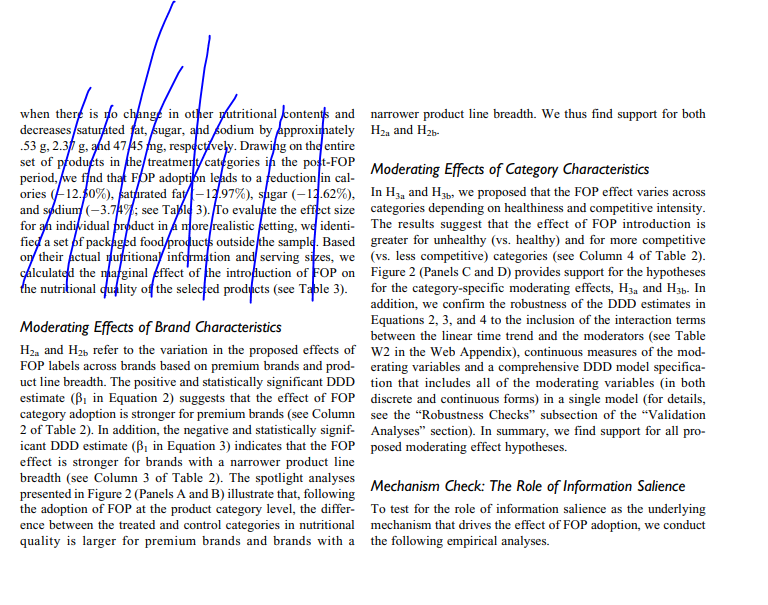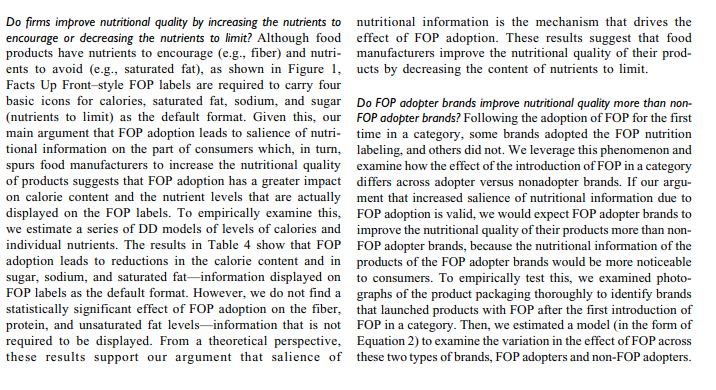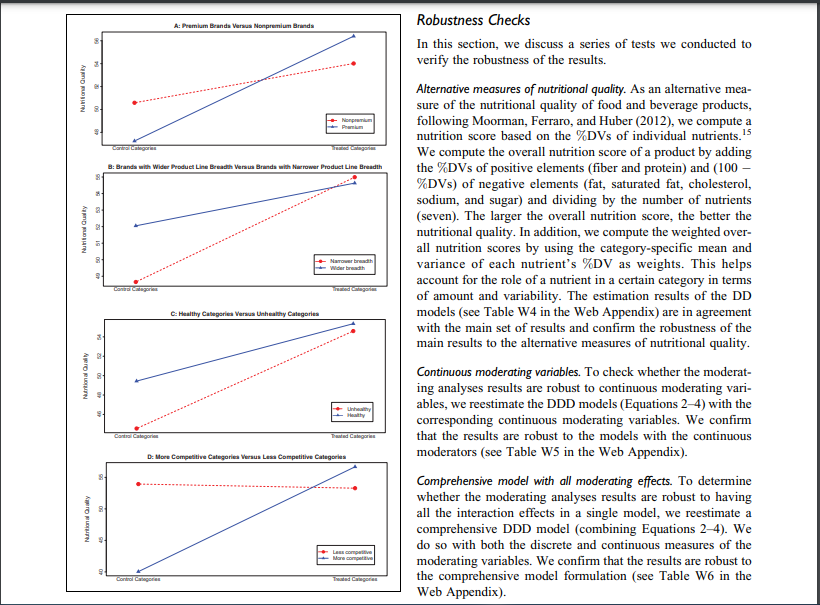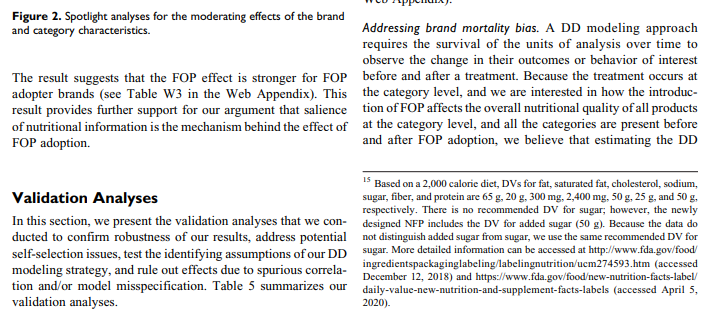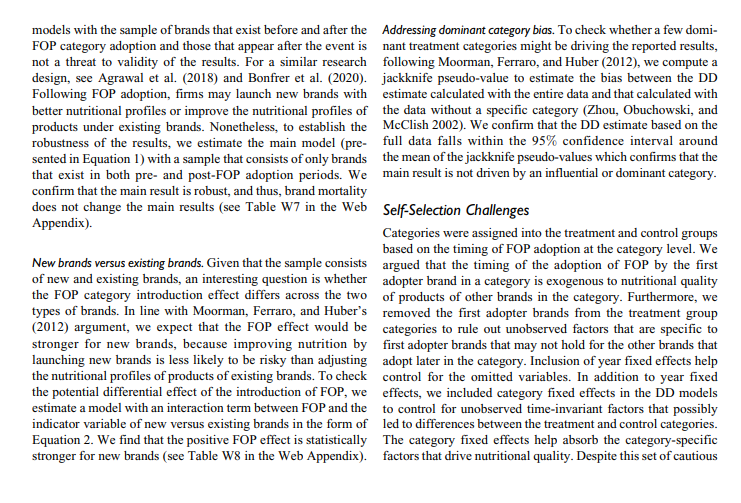I am providing pics of a journal article . The article is about the elements of the marketing mix strategy. Read the parts i have provided . And then please
a)Provide a summary of the article including the methodology, results, findings and conclusions of the research.
b)Discuss the implications for managers.
c)Discuss what you think of the article (value, relevance etc.), its findings and conclusions.
Please read carefully and answer all the parts
The article starts from the moderating effects of brand characteristics .
Moderating Effects nfBrond Characteristics H2, and H11, refer to the variation in the proposed effects of FOP labels across brands based on premium brands and prod- uct line breadth. The positive and statistically signicant DOD estimate ([3. in Equation 2} suggests that the effect of FOP category adoption is stronger for premium brands [see lColun'm 2 ofTahle 2}. In addition, the negative and statistically signif- icant DOD estimate ([3. in Equation 3] indicates that the FOP effect is sh'onger for brands with a narrower product line breadth [see lIColurrut 3 of Table 2}. The spotlight analyses presented in Figure 2 [Panels A. and B} illustrate that, following the adoption of FOP at the product category level, the di'er- ence between the treated and control categories in nutritional quality is larger for premium brands and brands with a narrower product line breadth. We thus nd support for both H21 and H25. Moderating Effects ofamgmy Characteristics In H3, and H3\Dofirms improve nutritional qualityhyincreosingtile nutrients to mourage or decreasing the nutrients to limit? Although food products have nutrients to encourage {e.g., fiber} and nutri- ents to avoid [c.g., saturated fat}, as shown in Figure l, Facts Up Frontstyle FOP labels are required to carry four basic icons for calories, saturated fat, sodium, and sugar {nutrients to limit] as the default format. lGiven this, our main argiunent that FOP adoption leads to salience of nutri- tional infonnation on the part of consumers which, in turn, sprurs food manufacturers to increase the nutritional quality of products suggests that FOP adoption has a greater impact on calorie content and the nutrient levels that are actually displayed on the FOP labels. To empiricallyr examine this, we estimate a series of DO models of levels arfcalor'ies and individual nuh'ients. The results in Table 4 show that FOP adoption leads to reductions in the calorie content and in sugar, sodium, and saturated fatinfonnation displayed on FOP labels as the default format. However, we do not nd a statistically signicant effect of FOP adoption on the ber, protein, and unsaturated fat levelsinformation that is not required to be displayed. From a theoretical perspective, these results support our argument that salience of nutritional information is the mechanism that drives the effect of FOP adoption. These results suggest that food manufacturers improve the nutritional qualityr of their prod- ucts by decreasing the content of nuh'ients to limit. DoFOP odog'rterhrmds approve mtrflr'oonl'quolity more than non- FOP adopter brands? Following the adoption afFOP for the rst time in a category, some brands adopted the FOP nuh'ition labeling, and others did not. We leverage this phenomenon and examine hawthe effect orfthe introduction ofFOP in a category differs across adopter versus nonadopter brands if our argu- ment that increased salience of nutritional information due to FOP adoption is valid, we would expect FOP adopter brands to improve the nutritional quality of their products more than non- FOP adopter hands, because the nutritional infonnation ofthe products orfthe FOP adopter brands would be more noticeable to consturlers. To empirically test this, we examined photo- graphs ofthe product packaging thoroughly to identify brands that launched products with FOP alter the rst introduction of FOP in a category. Then, we estimated a model [in the form of Equation 2} to examine the variation in the effect of FOP across these two types ofbrands, FOP adopters and non-FOP adopters. \f\f\f
